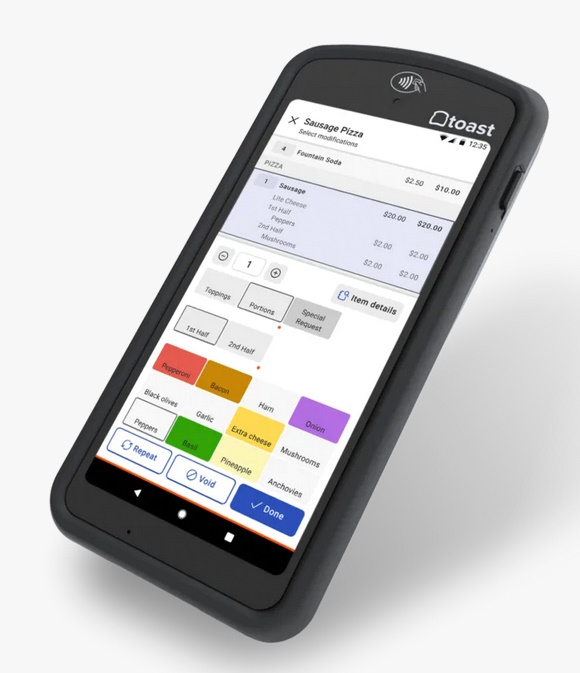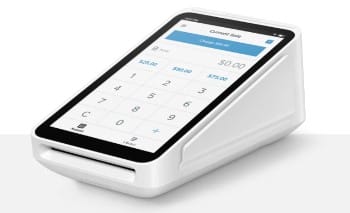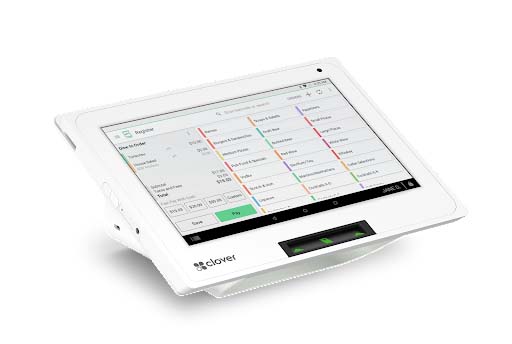A point-of-sale (POS) system combines hardware like touch-screen displays and credit card terminals with software tailored to accept payments and track sales. The POS hardware you need is dependent on the software you use, so it’s important to choose a suitable software system before purchasing any devices. But it’s equally important to know that your preferred POS system has the hardware you need. Here’s everything you need to know about POS equipment, where to get it, and how much it costs.
Best Point of Sale Hardware Options
Best For | Monthly Software Fees | Hardware Price Range | Installation Cost | Hardware Lease Available? | |
|---|---|---|---|---|---|
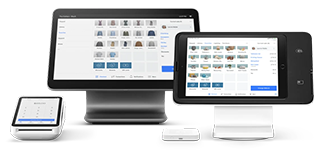 | Mobile businesses, brick-and-mortar retail and restaurants | $0-$89+ | $59-$1,959+ | N/A | No |
 | Multichannel retailers; ecommerce users who need an occasional rental | $29-$399+ | $49-$459+ | N/A | Yes; Rental from $9/day (for events) |
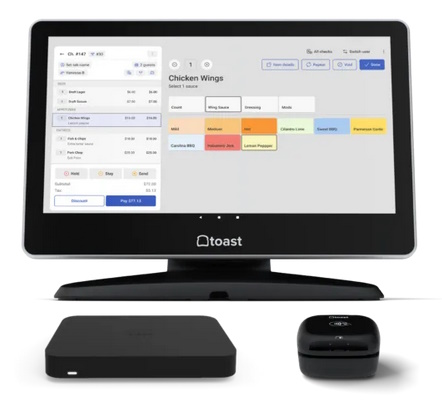 | Brick-and-mortar and multichannel restaurants | $0-$69+ | $0-$1,339.20 | $499+ (optional) | No |
 | Grocery stores | $69+ | Call for quote | Call for quote | Yes; Call for quote |
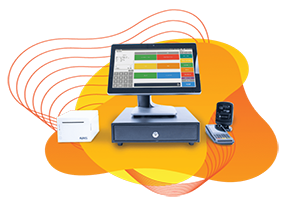 | Bakeries, convenience stores, liquor stores, ticketed venues | $59-$69+ | Terminal included | N/A | Yes; Call for quote |
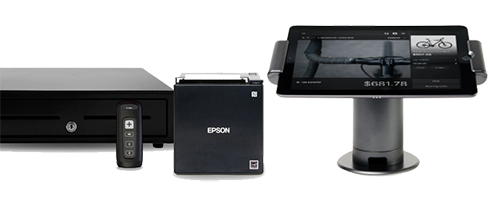 | Multichannel retail and restaurants | $69-$399+ | Call for quote | Optional; call for quote | No |
What about cash registers?
Cash registers record transactions and accept payments from customers. Cash registers today are more advanced than the simpler models of the past—they are now able to generate reports and manage inventory. But, in general, cash registers are still inferior to modern POS systems in terms of offering a full range of hardware and functionality. Learn more about cash registers vs POS systems and the types of cash registers.
Standard Point-of-Sale Hardware
The hardware you need for your POS system will depend on the type and size of your business. But at a minimum, most businesses need a POS terminal, a POS display screen, and a receipt printer.
POS Terminal
The POS terminal is a credit card reader with an attached screen. In retail businesses, the terminal is typically a PIN-pad-enabled card reader with an LED screen. In some industries (like restaurants), the card reader may be built into the main staff-facing POS display. So, restaurant staff might refer to the POS display as the “terminal.” Really, everyone is talking about the same thing—the screen that the card reader is attached to. The slideshow images below show examples of different POS terminals.
Prices for POS terminals can vary widely depending on the terminal type and whether it is built into a POS display. Some POS providers or payment processors also offer free POS terminals to new customers when they enroll in a long-term software subscription or merchant account. You can expect to spend from $0 to $1,200 on a POS terminal.
Who should use POS terminals:
- Businesses that want a budget POS hardware option
- Businesses that rely heavily on mobile sales
- Restaurants that don’t want to use a central cash wrap area
POS Display
If your POS terminal is not built into your POS display, you’ll need a separate staff-facing screen. There are several other optional POS display types (which we’ll explore below), but this main display faces your staff and enables them to perform all the POS functions like recording sales, processing discounts, returns, loyalty and rewards, and more. In most cases, this display can also operate as your employee clock-in and log-in screen.
Nowadays, most POS displays are touch screens. But in high-volume retail environments like grocery stores, you may still see non-touch-screen displays.
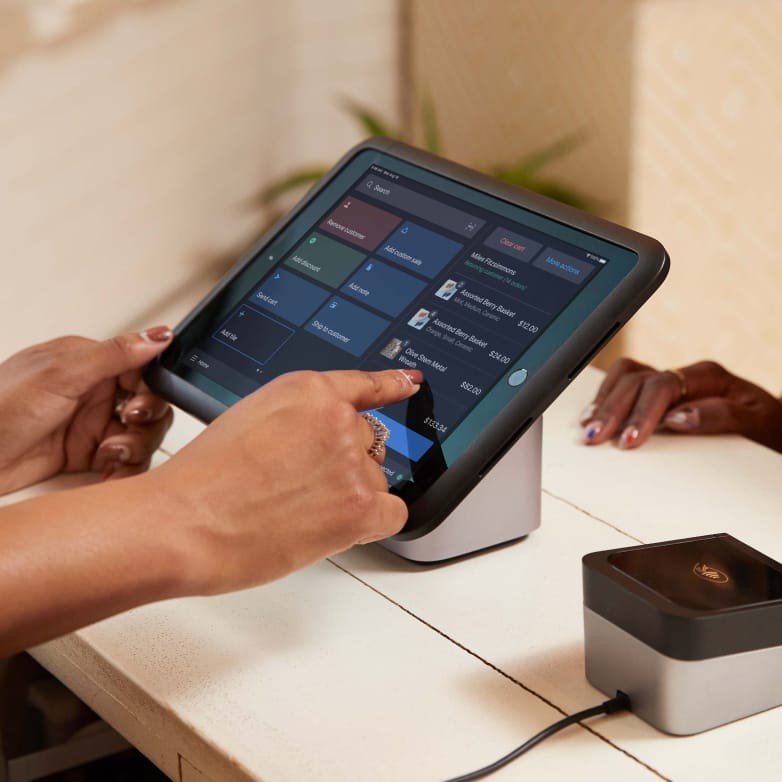
For most businesses, the touch-screen monitor is the largest hardware component of the POS system. (Source: Shopify)
POS displays tend to be the priciest point-of-sale hardware component. But like POS terminals, your costs can vary widely.
Many cloud POS systems, for example, rely on iPads as their POS displays. For those systems, you’ll need to purchase an iPad plus AV-compatible iPad stand. Square’s popular iPad-based POS display, Square Stand, costs $149 without an iPad, or $478 with an iPad. This is one of the most cost-effective POS displays on the market. Display costs can reach $2,000.
Who should use POS displays:
- Businesses with central cash wrap areas
- Businesses that want more robust POS hardware or more functionality than a mobile terminal
POS Receipt Printer
A receipt printer is becoming more of an option than a necessity—according to a survey by GreenAmerica.org, 34% of consumers would accept both paper and digital receipts equally. However, any POS you purchase in 2024 will likely require a receipt printer. You’ll see primarily thermal receipt printers, though if you print coupons, you might prefer a thermal transfer printer. This market is dominated by POS equipment heavyweights Epson and Star Micronics. Though they are not the only brands in the business, they tend to be the most dependable.
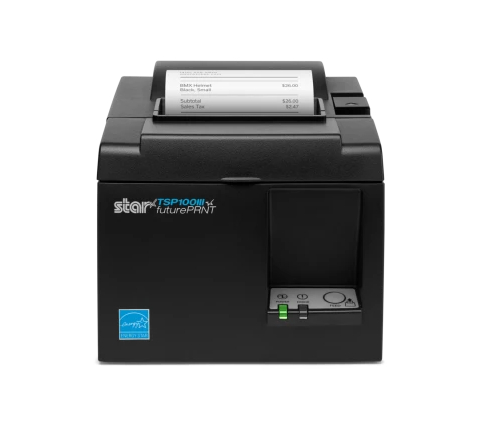
The StarMicronics TSP100 series receipt printers work with dozens of POS systems. (Source: Square)
Most receipt printers cost $300 to $600. Top-of-the-line receipt printers tend to have a higher print resolution, faster print speed, and a longer life, with features like automatic paper cutting and paper-saving functions. Take a deeper look at options here by reading our ranking of thermal receipt printers.
Who should use receipt printers:
- Businesses that want to print paper receipts (or have customers who prefer this over digital receipts)
- Businesses using POS systems that require receipt printers
So, what is a “POS station”?
“POS station” typically means the complete point-of-sale hardware package and where it is located in a shop. As in, “extra receipt paper is stored in the POS station.” Less frequently, people refer to a POS touch-screen display that has an integrated card reader as a POS station.
Specialized POS Equipment
In addition to basic point of sale hardware, many business types need specialized POS equipment. Depending on the system type, additional hardware may require connections via USB, lightning port, headphone jacks, ethernet, or serial connections. Cloud POS systems also connect hardware via Bluetooth and Wi-Fi.
These are some additional pieces of point-of-sale hardware:
Customer-facing Display

A customer-facing display is a secondary screen on a POS register system that faces the customer instead of the cashier. It allows customers to see or pay for their order as it’s being rung up. Having this extra screen makes things faster and more convenient for both the cashier and the customer, as each party can look at identical or complementary information on their own screen.
Cost: $200 to $800
Best for: Restaurants and retail
Cash Drawer

Businesses that allow cash payments will want a cash drawer accessory. These help to arrange and keep money safe. Drawers are synced to the larger POS system so that they only open at appropriate times, and the system logs each time that they open and close.
Cost: $100+ per drawer
Best for: Any business that accepts cash
Credit Card Reader
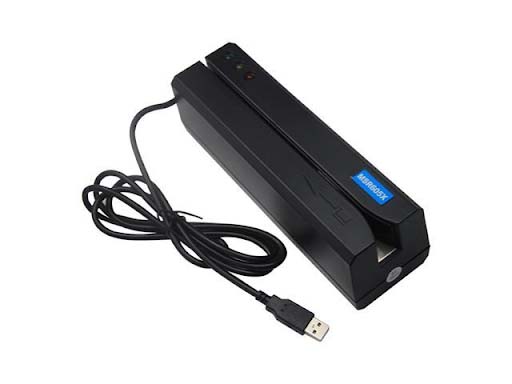
A credit card reader is a small device designed to attach to a larger POS system and securely collect credit and debit payments. Readers are able to accept some combination of dip, tap, and contactless card payments. Digital wallet payments may be acceptable as well. Some card readers physically attach to smartphones, giving you both payment flexibility and sales mobility.
Cost: $10 (for phone) to $500
Best for: Most small businesses and multichannel retailers
Barcode Scanner
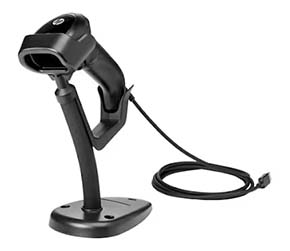
A barcode scanner reads price labels, loyalty cards, coupons, and ID cards. They provide a way to read or collect information that is faster than manually typing it into the POS system. Barcode scanners can connect to POS systems—both larger registers and mobile POS apps—via USB cable or Bluetooth wireless connection.
Cost: $119 to $800
Best for: Gift stores and supermarkets
Scanner Scale
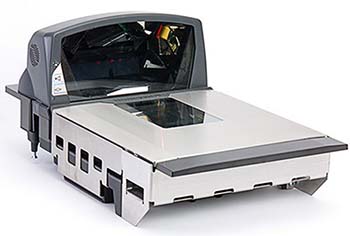
A scanner scale measures an item’s weight along with its price labels. It is ideal for groceries, bakeries, delis, butcher shops, seafood businesses, dispensaries, and any store that sells items by weight. Scanner scales usually connect to POS kits via a USB cable.
Cost: $300 to $2,200
Best for: Groceries, bakeries, delis, butcher shops, and seafood businesses
Printer
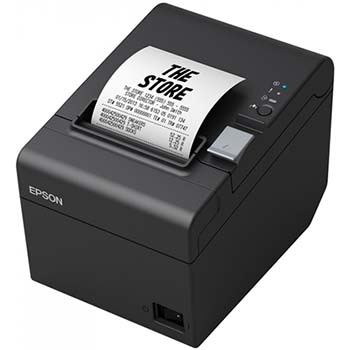
Printers come in lots of shapes and sizes, and can serve various purposes for different businesses. There are printers designed specifically to generate customer receipts, barcode labels, or kitchen tickets. Restaurant-specific printers are designed to withstand hot or humid environments. Printers can print via ink ribbons or cartridges while thermal printers use precise heat application. Printers can sync with other POS hardware via USB or Ethernet connections.
Cost: $100 to $660
Best for: Most small businesses and multichannel retailers; restaurants, food trucks, and other food service businesses
Self-serve Kiosk

Self-serve kiosks allow customers to order and pay for items without a cashier’s help. This frees up your staff to focus on more complex or critical tasks rather than just taking customer orders. A kiosk can be as simple as a tablet device set up on a charging stand, with kiosk software installed and ready for use. Attach a small printer and a payment device such as a card reader, and you’re good to go.
Cost: $400 to $5,000
Best for: Restaurants, gas stations, medical facilities, and service businesses
Kitchen Display System (KDS)
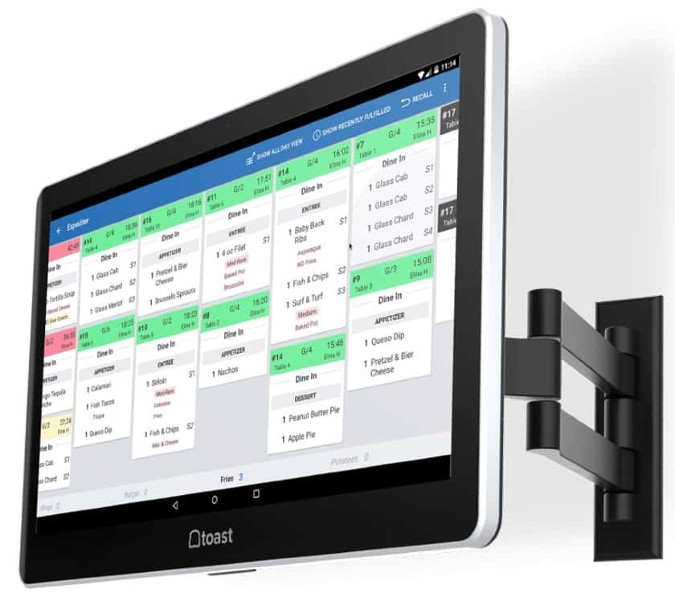
A kitchen display system organizes orders in restaurant kitchens, tracks cooking times, and monitors kitchen productivity. It also allows front and back-of-house staff to coordinate with each other quickly and efficiently, while also reducing the chance of errors due to miscommunication. A good KDS will be able to consolidate orders from multiple sources, such as kiosks and online orders, in addition to orders made in person.
Cost: $100 to $1,500
Best for: Counter service and full-service restaurants
Digital Menu Board
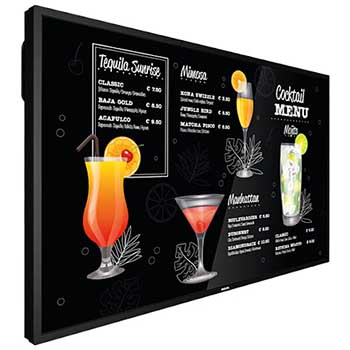
A digital menu board informs customers of your offering, service, or menu in a digital format—saving you space and materials that would be required if you went with physical menus. Digital menu boards can also be customized or templated to match the theme or aesthetic of your establishment, so they can also be a vehicle for marketing as well as enhancing the customer experience.
Cost: $130 to $2,000
Best for: Restaurants, movie theaters, service businesses, retail shops
POS Equipment by Business Type
How do all these pieces of POS equipment fit together? And how do you know what type of equipment your business needs? Click through the tabs below to see examples of the POS hardware used by various business types.
How to Choose POS Hardware
Choosing the best POS hardware can be a simple matter. In some cases, you can just choose hardware based on the industry in which your business operates (more on this below). Point of sale hardware often comes in the form of full hardware kits that contain all the devices you’ll need to process transactions and run your business.
If you prefer to pick and choose your own devices rather than buy pre-built kits, you’ll need to be more discerning about what hardware to select. Here are some questions to consider when choosing your POS hardware.
While many POS hardware devices are general-use and compatible with many industries, some hardware is purpose-built for specific niches. For example, restaurants will find KDSes and digital menu boards useful. Retail shops might appreciate countertop POS kits with customer-facing displays and barcode scanners. If your business sells products by weight (as a dispensary would), an electronic weighing scale is a must.
Are you running a cafe or bistro where you’d like to let customers pay at their table right after their meal? You’ll need a good wireless POS terminal with a credit card reader and a built-in receipt printer. Do you prefer to have customers come to a central cashier and pay there? You’ll want a robust countertop POS with a connected receipt printer and cash drawer; a customer-facing display might make transactions easier as well.
Would you rather have customers do all the ordering and paying with minimal interaction with your staff? Self-service kiosks are the way to go.
POS hardware comes in a wide range of pricing, but in general, full pre-built hardware kits will cost the most—expect to pay over a thousand dollars for these. Mobile POS devices are cheaper (a few hundred dollars), and may be enough for a new small business that doesn’t yet have a large customer base.
In some cases, you may be able to get hardware for free; for example, Square gives you one free card reader accessory upon creating an account, and Toast offers a pay-as-you-go hardware option with no upfront payments.
Where to Buy POS Hardware
The best place to purchase your POS hardware is directly through your POS provider or payments provider. Some iPad POS systems are designed to be used with tablets you already own (like Square). In those cases, bringing your own tablets to operate on provider-designed iPad stands is fine.
If you bring your own payment processor (as you can with systems like Lightspeed), the processor typically provides you with credit card terminals. POS systems that come with built-in payment processing typically have card terminals built into the POS display or stand.
Risks of Buying Third-party POS Equipment
Internet sites like eBay and Amazon are full of used and new POS equipment. In some cases, this equipment is sold directly by the manufacturer and may be perfectly compatible with your POS. However, it is best to use the hardware that is approved and supplied by your POS and payment providers because those pieces of equipment will be covered by service agreements.
If anything goes wrong with your POS system, the provider may be limited in the support it can provide. For example, if your store logo on your customer receipts is printing strangely, it could be an issue with the POS or the receipt printer. If you purchased your receipt printer from an internet seller, your POS provider wouldn’t troubleshoot that equipment with you.
Your monthly POS software fees typically include the cost of ongoing customer support. So, don’t shortchange yourself by limiting how these support reps can help you. Third-party equipment might be less expensive upfront, but it can cost you in the long run.
Frequently Asked Questions (FAQs)
Click through the sections below to learn more about POS software and hardware costs, necessities, and examples.
Generally, POS software runs from $0 to more than $400 per month. Hardware runs from $59 for a smartphone-enabled card reader to nearly $2,000 for a full POS station with a display, card reader, cash drawer, and receipt printer. Many POS providers offer payment plans for hardware, or support hardware you already own.
At its most basic, you need a POS screen, which could be as simple as a smartphone or tablet, and a credit card reader that can read cards at least by swipe and chip. If you accept cash, you’ll want a cash drawer. Many cash drawers are triggered by the receipt printer, so depending on your software, you may also need one of those.
Not necessarily, but be careful when buying hardware from third-party sites. Not all POS software is compatible with every POS hardware, and some card readers, once programmed, cannot be reprogrammed to accept other payment processors. Check with your POS software provider to find out whether attaching third-party hardware will void your warranties or service agreements.
In most cases, POS equipment is very much alike. Many POS systems use iPads instead of dedicated registers. However, there are some exceptions. Busy kitchens, for example, may want a hardier KDS and impact kitchen printers. Meanwhile, busy stores like groceries may want registers with scanner scales.
If you are an occasional seller, such as a hobbyist who sells at craft fairs or a business that sells at trade shows, you have a couple of options. One is to use a mobile POS app such as Square or Zettle, which uses your smartphone and a card reader you plug into the phone. Alternatively, if you use Shopify for your online store, you can rent a POS system by the day.
Most modern POS systems use the cloud for some or all of their connectivity. However, many can process sales and store credit card payment information offline temporarily. This is usually dependent on the software, so if connectivity is a concern, be sure to ask what your POS system can do offline.
Bottom Line
POS hardware provides the physical tools you need to make the most of your POS software. The hardware you need will depend on your business type, the tasks you commonly perform, and your traffic volume. The best place to purchase POS hardware is directly through your POS provider. If you purchase POS equipment from third-party sellers or websites, make sure they are reputable, and back up their hardware with strong warranties.
